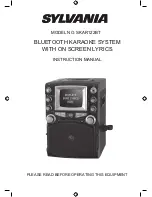
E3 Tungsten Electrodes work well on AC or DC. They can be used DC electrode positive or
negative with a pointed end, or balled for use with AC power sources.
Ceriated
(Color Code: Orange)
Ceriated tungsten electrodes (AWS classification EWCe-2) contain a minimum of 97.30 percent
tungsten and 1.80 to 2.20percent cerium and are referred to as 2 percent ceriated. Ceriated
tungstens perform best in DC welding at low current settings. They have excellent arc starts at
low amperages and become popular in such applications as orbital tube welding, thin sheet metal
work. They are best used to weld carbon steel, stainless steel, nickel alloys, and titanium, and in
some cases it can replace 2 percent thoriated electrodes. Ceriated tungsten is best suited for lower
amperages it should last longer than Thoriated tungsten higher amperage applications are best left
to Thoriated or Lanthanated tungsten.
Lanthanated
(Color Code: Gold)
Lanthanated tungsten electrodes (AWS classification EWLa-1.5) contain a minimum of 97.80
percent tungsten and 1.30percent to 1.70 percent lanthanum, and are known as 1.5 percent
lanthanated. These electrodes have excellent arc starting, a low burn off rate, good arc stability,
and excellent re-ignition characteristics. Lanthanated tungstens also share the conductivity
characteristics of 2 percent thoriated tungsten. Lanthanated tungsten electrodes are ideal if you
want to opti-mise your welding capabilities. They work well on AC or DC electrode negative with
a pointed end, or they can be balled for use with AC sine wave power sources. Lanthanated
tungsten maintains a sharpened point well, which is an advantage for welding steel and stainless
steel on DC or AC from square wave power sources.
Zirconiated (Color Code: White)
Zirconiated tungsten electrodes (AWS classification EWZr-1) contain a minimum of 99.10
percent tungsten and 0.15 to 0.40percent zirconium. Most commonly used for AC welding
Zirconiated tungsten produces a very stable arc and is resistant to tungsten spitting. It is ideal for
AC welding because it retains a balled tip and has a high resistance to contamination. Its
current-carrying capacity is equal to or greater than that of thoriated tungsten. Zirconiated
tungsten is not recommended for DC welding.
31
www.strata.co.nz
EZITIG 205DC
















































